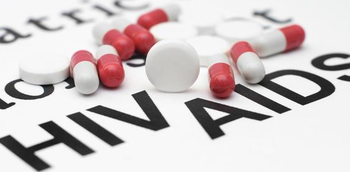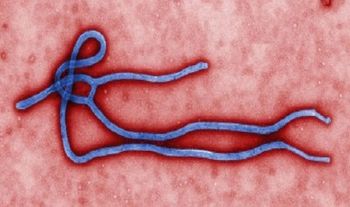
A different Ebola strain reported in the Congo as researchers race to find a vaccine.

A different Ebola strain reported in the Congo as researchers race to find a vaccine.

Study suggests pharmacists are more than qualified to navigate outpatients with HIV through treatment options.

Ceasing treatment may be the only way to determine whether HIV is cured, but doing so carries long-term risks.

Doctors say experimental Ebola drugs should not be limited to well-off patients.

Promising treatment protects nonhuman primates from Marburg virus up to 3 days after infection.

The FDA has approved the first needle-free device for injecting the Afluria influenza vaccine in adult patients aged 18 to 64 years.

Doctors Without Borders says virus cannot be contained without massive mobilization of resources to West Africa.

Ebola-related death toll climbs above 1200 as health care workers face increased threats from desperate region.

In a large-scale trial, Sanofi's Fluzone High-Dose vaccine demonstrated efficacy in preventing influenza specifically in adults aged 65 years or older.

Chronic lung disease may increase the risk of developing lung cancer, independently of tobacco use and other known risk factors.

The high cost of treating hepatitis C with sofosbuvir (Sovaldi) has received a lot of attention in the literature.

Roughly one-third of teen girls' clinicians and almost half of teen boys' clinicians did not recommend HPV vaccination in 2013.

FDA stresses that dietary supplements cannot prevent or cure the Ebola virus.

World Health Organization cautions outbreak could last for several months.

Vaccine developed by Canadian government could be mass produced within months.

World Health Organization declaration assures drug manufacturers that there will be a market for Ebola medications.

Supply of ZMapp now gone as death toll climbs above 1000.


Several treatments for hemorrhagic fever are in different stages of development.

Clinical hold on Tekmira's Ebola treatment changed to partial hold by the FDA.

The World Health Organization will examine an unproven Ebola treatment that showed promise in 2 Americans infected with the virus.


Efforts to halt the spread of Ebola continue as a Saudi Arabian man suspected of having the virus adds to the climbing death toll in West Africa.

Just 20 or 30 years ago, mention of vitamin supplementation caused many health care professionals to talk about creating "expensive urine." Today, however, vitamin and nutrient supplementation has become an important health care intervention.

A New York man who showed symptoms of Ebola has been deemed unlikely to have the virus.